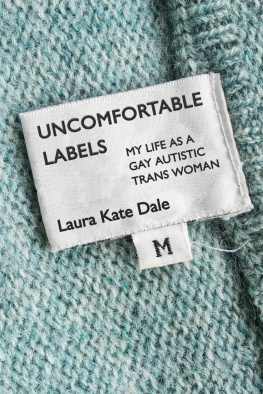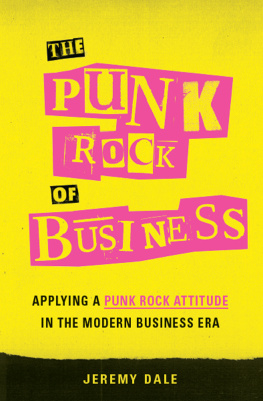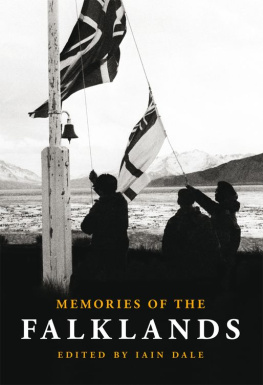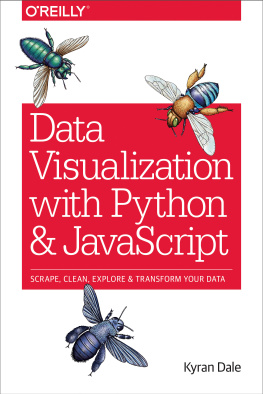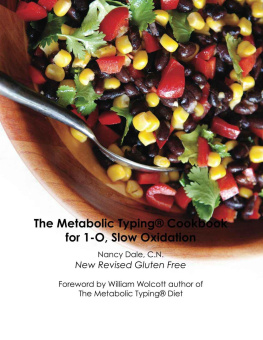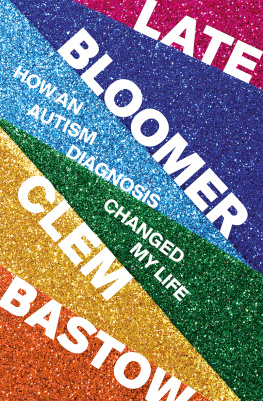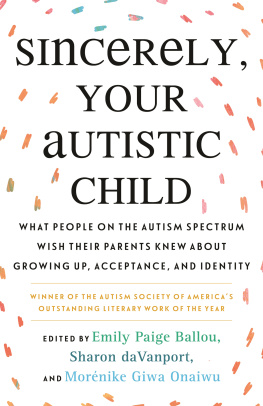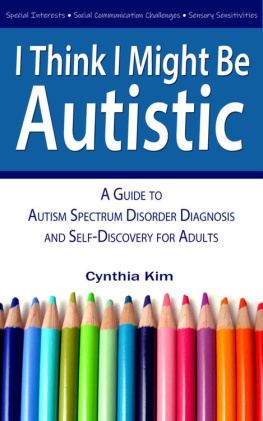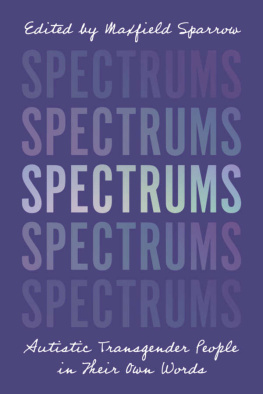Contents

Uncomfortable
Labels
My Life as a Gay Autistic Trans Woman
Laura Kate Dale

Jessica Kingsley Publishers
London and Philadelphia
Contents
PROLOGUE
Being LGBT and Having Autism Is Actually Pretty Common
When I was born in the autumn of 1991, doctors determined that I was born male. To be fair to the doctors, as well as my parents, it was a statistically sensible assumption to make. I was born with a penis, with no ambiguous secondary sex characteristics, and in the vast majority of cases that fact is directly correlated with someone being male. Most people born with a penis are assigned male at birth, live their whole lives comfortably identifying as men and think very little about their gender beyond the surface level. For most people, sex assigned at birth based on sexual characteristics and a persons innate gender are one and the same.
I was also assumed to be neurotypical, meaning that I was not identified as having any characteristics that would necessitate a diagnosis of a mental health condition or disability. Spoiler alert for the rest of this book: it turns out both those assumptions were completely wrong.
When I was just turning 18, I was diagnosed with Asperger syndrome, an autism spectrum condition now simply diagnosed under the umbrella term autism spectrum disorder. What that means for me personally is that I am at times under sensitive, and at times over sensitive, to sensory stimuli. When it comes to sounds, I struggle to filter out needless background noise from important primary noise, meaning in spaces with multiple noise sources I can feel like Im being crushed under aggressive, invasive, distressing static that fills up my head. When it comes to nonverbal cues like subtext, facial expressions or body language, Im under sensitive, and as a result, while I can with effort pick out those cues and understand their meaning, doing so requires immense amounts of focus, tiring me out quickly and leaving me exhausted.
In combination, these lead to me often being tired and overwhelmed by social situations. That doesnt mean I dont crave friendship, affection and human contact like my peers, but I have to engage with them in ways that accommodate my struggles. I can for the most part handle social situations, so long as I control the terms of the interaction and have reliable constants I can control as safety points; but sometimes it all becomes a little too much to handle, living in a head thats never quiet.
While there was no known diagnosed history of autism in my family prior to my birth, both of my younger half-brothers who grew up separately from me were also diagnosed with autism spectrum conditions, leading me to suspect the condition may run on my biological fathers side of the family.
Also at age 18, I started to come out as a transgender woman to some close friends, meaning that while I was assigned male at birth, I felt there was a distressing disconnect between my physical body and the way I viewed myself on a core personal level. I felt uncomfortable about my body, I felt uncomfortable being referred to as male, and as soon as I switched to female presentation and pronouns and a new name, I felt inherently more at home with myself. In the years since Ive sought medication, undertaken surgery and filed legal paperwork to change my gender on all UK documents. As a woman who is primarily attracted to other women, I tend to identify myself as a lesbian. Maybe Im bi or pan labels are complicated but I sure as heck experience same-sex attractions.
So while the assumption when I was born was that I was or would grow up to be a neurotypical heterosexual boy, that whole idea didnt really pan out long term.
Maths time
I want to talk a little bit about statistics before we go any further. I know, maths is usually pretty boring, but I promise this little bit of maths is really important to whats ahead in the book. Were going to talk a little bit about how common being LGBT is, how common being on the autism spectrum is and how common the overlap of the two is.
In the UK, around 1 in 50 people are on Government records as identifying as gay, lesbian or bisexual in 2016, Accurate statistics for how many transgender people exist in the UK vary depending on metrics used, with many transgender people not reporting their transgender status for fear of harassment or discrimination, but low end estimates are that around 1 in every 300 people in the UK is transgender.
The reason I bring up these facts is that while on paper those statistics would suggest being trans, having an autism diagnosis and being gay would be pretty statistically rare, theres actually a pretty high rate of overlap between the three. According to an international study by Dr Mark Stokes from La Trobe University in Melbourne, Australia, a noticeably higher than average percentage of individuals on the autism spectrum identified as non-heterosexual, felt at odds with their assigned at birth sex, or suffered symptoms of dysphoria as a result of transgender status.
In an article in Spectrum , it was quoted that:
Between 8 and 10 percent of children and adolescents seen at gender clinics around the world meet the diagnostic criteria for autism, according to studies carried out over the past five years, while roughly 20 percent have autism traits such as impaired social and communication skills or intense focus and attention to detail. Some seek treatment for their gender dysphoria already knowing or suspecting they have autism, but the majority of people in these studies had never sought nor received an autism diagnosis.
The reason for this preamble is because I am a gay, trans woman with autism. In life, Im often assumed to be a statistical outlier, a fringe case, and have to muddle together a bunch of disparate support structures to get by day to day. I attend autism support groups, I get help for my gender dysphoria, but never in my process of getting diagnosed with both conditions was the overlap addressed by the medical community. It was never pointed out to me that the two might share any links, that fixing one might help relieve symptoms of the other, and that I might benefit from understanding the areas where my struggles could overlap.
A statistically significant number of people, like me, are diagnosed with both autism and gender dysphoria, and there are a significant number of many and varied areas of life where the two intersect, clash, cause issues for each other and exacerbate each other. Thats what pushed me to finally sit down and write a book.
I always thought I was alone. I never had anyone to tell me that my experiences made sense to them. I never had anyone elses experiences available as evidence that what I was experiencing was real. Thats why Im writing this book; its the book I wish Id been able to read when I was younger.
The book is structured like a memoir, following my personal life story from birth, up to today age 27, and using my own experiences as a launching point from which I can talk about the intersections between LGBT status and autism. The book is split into three sections: the first focused on my life prior to transition and diagnosis, the second focused on living through the turbulent self-discovery years, and the last more focused on life after things stabilised a little. That final section is a little less memoir and a little more personal essay, but its still ultimately all about my experiences with autism and LGBT status, both the continued struggles I face and the joys I have found.
My hope is that by the time youre done reading, youll have a better sense of how autism and LGBT status overlap, perhaps understand better why people in both camps might struggle to fulfil the stereotypes of how they are meant to act, and maybe know a bit more about how to support people like me who just want to get on with living our lives, even if were a little out of step with those around us.

